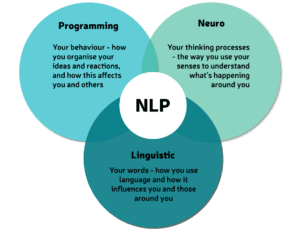A couple of data points recently have led to me to contemplate what I know about sex and the differences between men and women. Let’s see if any of this sounds familiar.
Keys to a Woman’s Sexual Desire, An Inquiry
First, I picked up a book in the library yesterday called Kiss and Tell, New Secrets to Women’s Sexual Desire. I jumped quickly to the cliff notes section and I read something I had suspected but could now confirm. There wasn’t data given, or a study cited, but the message was very clear. Men (testosterone-driven) crave sex all the time, it’s part of our animal. Women (0.10 of the testosterone) don’t crave sex in the same way and often require much more enticement to even think about sex.
Okay, so that’s not all that new, but this next part was the confirmation I had experienced in my first two marriages. During courtship, it is important to get to know your partner’s level of desire. See, in the early phases of a relationship, a woman’s libido and testosterone levels are boosted by the novelty and excitement of sex. After several months in a relationship, assuming monogamy, the woman’s sexual desire levels falls back to her normal level. The advice, from this woman, and woman’s sexuality expert, was to figure that out early. If the two levels of desire are wildly out of sync there might be a problem as the routine of sex becomes more predictable.
It’s no mystery that women desire sex too. But what was news (at least confirmed my thinking) was that during the initial blush of a relationship your partner may exhibit sexual tendencies and enthusiasm that is not in line with her normal levels of arousal and desire. And according to this expert, the range of normal sexual desire ranges from once a month, to once a week, to once a day. All of them being considered different but normal. No wonder the online dating questions about your sexual desire and frequency are so interesting, and HELLO: IMPORTANT.
Frequency of Sex May Not Be the Issue
Second, today I read a column in Dear Abby about a woman talking about her husband’s obsession with the frequency of sex. Her mate of 30 years liked to track their sex on a spreadsheet and aim for 100 times a year. “Last year, we only had sex 72 times and he was upset.”
Holy cow! 72 times a year is A LOT. About what I would LIKE, but expect? No way.
And Abby responded quite simply, he should stop acting like a college kid making marks on his bedpost and consider the Quality of the sex and not just the frequency.
This got me to thinking about the discrepancy in my marriage that began to show up more dramatically after our second child was born. See, before our daughter, we were trying to have another kid. The sex was wet, spontaneous, and playful. She had a bit more purpose and calculation than I did, but it was great. For some GOAL, her libido had risen to match the task.
Things started taking a nosedive at some point after our second child was born. I understand this a common occurrence. There is a huge burden on moms after having a single child, and second children can push them over the edge, emotionally. It appeared that a comfortable frequency for my then-wife would’ve been once or twice a month. But letting a few months go by without accepting my offers of a massage or straight out asking to make love, seemed like no problem to her. I tried to be a good sport and roll with it. But it was hard to be sol lonely while sleeping next to a woman who I adored.
A few years after my daughter was born I got a vasectomy. It seemed like a good thing to do, and I imagined we were both hopeful that it might provide some juice to our love-making attempts. Certainly not having to worry about protection was a big incentive. And, a funny thing happened that surprised both of us, and reminded me today of the Dear Abby column. You see, when you have a vasectomy, the prescription is to have 45 ejaculations before coming back to the doctor’s office to get tested for swimmers.
Woo Hoo!
Somehow the GOAL really inspired my then-wife. It was like checking boxes on a spreadsheet or getting A’s on a test. We had sex all over the place. And it was occasionally just about getting me off and getting another gold star for the week. Fine with me. We reached the goal and suddenly we were able to have unprotected sex again. And things were HOT HOT HOT. For about a week. I’m not kidding.
Finding and Keeping Our Sexual Sync
We never recovered our sexual sync. And it wasn’t too much later that things started to go off the rails on deeper issues. But I think it was indicated by my wife’s return to a frozen libido. Again, I found myself making love alone rather than to a woman who I adored and found to be my sexual ideal, in all except desire or frequency. And when she *caught* me reading a book about recovering from your sexless marriage, she was angry rather than curious. I was accusing her of being a bad lover, a bad wife, and a less-than woman. That wasn’t the idea behind the book at all, but it sure triggered some difficult conversations about sex and lack of sex. Things did not get better.
Keeping sexual communication open throughout your relationship is critical. As one partner starts closing off, and not just having periods of low sexual desire, but shutting down the idea of sex, something is going to break down. And it’s either going to be your relationship or your relationship to sex and how you connect with each other. There might be a way back to the sexual connection, but both partners have to willing and open. It takes energy and trust to stay present during sex. If you have neither, your lack of emotional connection is going to damage your intimacy.
What’s the answer? Keep talking about it. When someone is feeling lonely, while still in an intimate relationship, there might need to be an emotional intervention. Keeping your sexual health in sync with your partner is part of building a lasting relationship.
Thomas Moore said in “Care of the Soul,”
“We need people in our lives with whom we can be as open as possible. To have real conversations with people may seem like such a simple, obvious suggestion, but it involves courage and risk.”
Sex is part of staying open and connected. Don’t let go of that connection in your relationship unless you are planning to make a change.
Always Love,
John McElhenney – life coach austin texas
Facebook | Instagram | Pinterest | @wholeparent
Related posts:
- The Language of Love: Speaking the Truth with Kindness
- Understanding My Co-parent’s Malfunction: My Easy Indifference
- Pointing Your Arrow Towards Happiness: Lessons In Self-Awareness
- Dating 2.0: Enticing and Keeping the Next Love of Your Life?
- 3-point Relationship Strategy: Where You Lead I Follow
You can find all of my books on AMAZON





